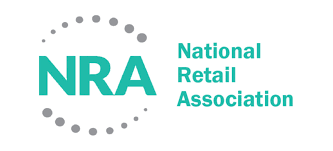Title Page
-
Conducted on
-
Prepared by
-
Location
-
The Shopping Centre Council of Australia (SCCA), National Retail Association (NRA), Shop Distributive and Allied Employees Association (SDA), Pharmacy Guild of Australia (PGA) and Australian Retailers Association (ARA) have jointly developed the Protocol to provide a consistent, practical and public-health led guide for shopping centres and retailers that continue to trade, are
This Protocol:
• is a simple, practical and public-health led guide for retailers and shopping centres that continue to trade, are re-opening or are preparing to re-open when COVID-19 restrictions ease,
• is particularly focussed on public gatherings, whereby retail employees, customers, contractors and others are physically in a retail store or shopping centre,
• provides 10 key actions that should be taken, however does not substitute legislative responsibilities. Further guidance should be taken from National Cabinet decisions, public health authorities and workplace health and safety authorities such as WorkSafe Australia, and
• key actions will be different at each shopping centre and retailer, noting that each shopping centre, retailer (e.g. café versus clothing versus pharmacy) and retail premises is different, including issues such as location, tenancy mix, operating hours, size, customer visits, openair / enclosed spaces, customer access points, car-parks, loading docks and co location with public transport facilities.
The key principles which have guided this Protocol are:
• public health and safety guidelines to protect people against infection and help prevent the spread of COVID-19,
• compliance with ongoing Government and public health authority rules, directions and restrictions, and
• working with and assisting Government and public health authorities when required.
The 10 Key Actions
-
1. Making alcohol-based hand sanitiser at key locations such as store entrances, building entrances, customer service desks and food courts.
-
2. Increasing frequent cleaning and disinfecting of regularly used objects and hard surfaces (e.g. payment registers, ETFPOS machines, shopping trolleys, counters and benches, food-court tables, staff-rooms) and other key hygiene measures (e.g. waste disposal).
-
3. Facilitating and encouraging social distancing guidelines, which is currently a distance of 1.5m. Actions could include signage ‘reminders’ and ground markings (e.g. stickers or tape) for queueing.
-
4. Ensuring public gathering limits in accordance with Government direction are adhered to, which is currently no more than 1 person per 4m² in stores (inclusive of staff),. You can regulate access points, monitor customer counts at relevant entrances, and display signage.
-
5. Promoting contactless transactions such as ‘tap and go’ instead of cash for payments, facilitating distancing at counters and benches, and having staff wear disposable gloves when they are handling objects and money.
-
6. Monitoring and encouraging customer adherence to relevant public health guidelines by security guards and other personnel, which may also include police visits to shopping centres.
-
7. Continuing to focus on the community’s access to essential services such as supermarkets, pharmacies and health and medical facilities, especially for vulnerable people.
-
8. Daily check-ins with employees on their well-being, ensuring employees and contractors are properly trained and have access to relevant information and personal protective equipment (PPE). These check-ins will include monitoring customer behaviour to ensure retail workers are being treated with respect.
-
9. Fostering open and frequent communication between shopping centre management and retailers, including to alert each party to any public health authority directive, to assist authorities when required, and continue to release information and guidance to employees and customers about good hygiene advice
-
10. Maintaining relevant essential safety measures such as air-handling systems, exit doors, emergency power supply, smoke alarms, sprinkler systems and fire-isolated stairs.
Sign Off
-
Name and Signature
















